Et tungt og langsomt menneske has been performed at Kunstbygningen i Vrå, 2024 and Spanien 19C in Aarhus, 2024.
Stones could be considered the thing in nature that are the furthest from us humans. They neither birth nor set bloom, but they have traveled a long way to become who they are today. In the performance piece Et tungt og langsomt menneske (A slow and heavy person) the stones are the center of a story about the transformation of grief and about recognizing oneself in the slow life of the stones. It is based on the artist's book Det er på tide at stenene blomstrer, which is available here.
All photos by Rikke Ehlers Nilsson
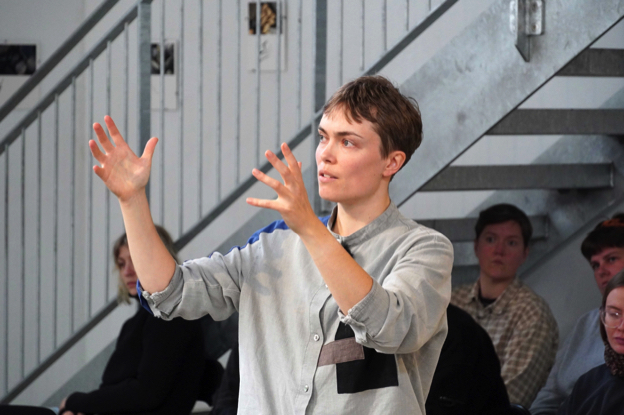
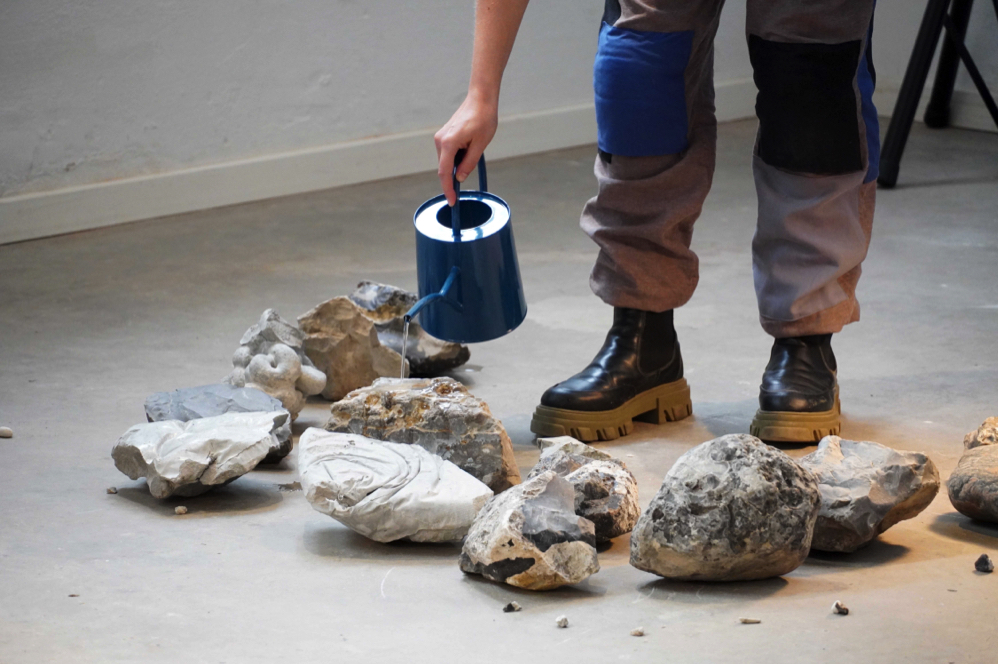
Et tungt og langsomt menneske
Performance based on the text from the artist book Det er på tide at stenene blomstrer, published in 2023. Duration approx. 55 min.
Composer: Ragnhild May. Dramaturge: Storm Møller Madsen.
2024

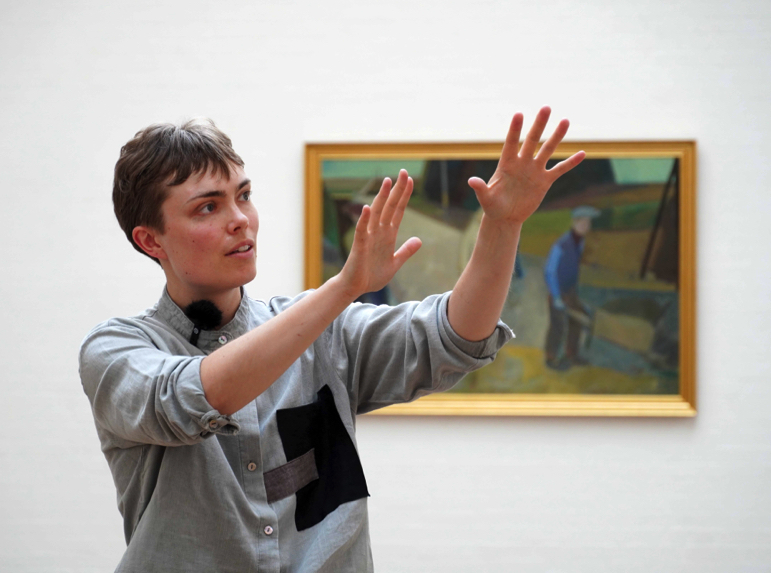
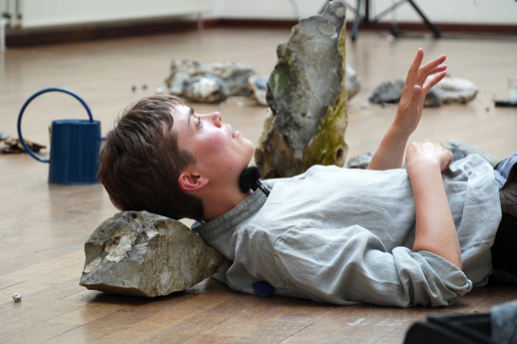

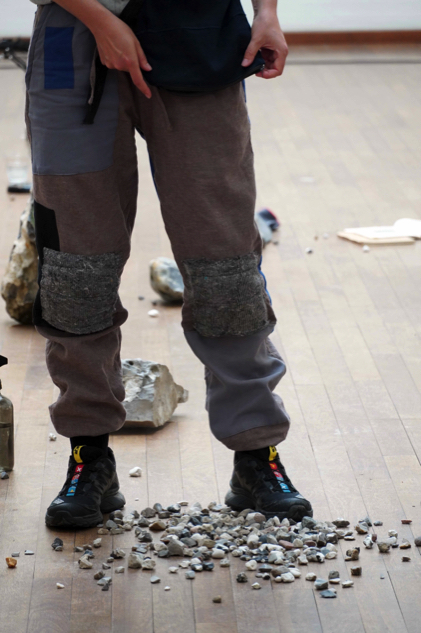
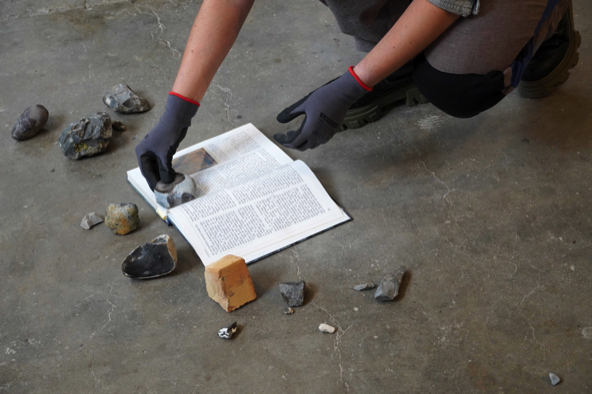
The piece is a monologue about a brother who, despite his death, is still present. Geology is used as a metaphor to talk about grief and gender: On the one hand, the grief of losing a brother, which never really disappears but is gradually matured as a core – a sense of the heavy. And on the other hand, an identity as a trans person, which develops slowly, tectonically. The stones are faithful bodies that might look dead, but they are still crystallizing. It is a story about loss – but also about finding one's place in history. About being on your way through grief and through the landscape, towards a deeper understanding of oneself, where the stones become points of reference, that inspire reflection about change and belonging.
The stones are used to create slow tectonic movements and powerful volcanic eruptions. Pebbles that clink in the pocket like little treasures. Stones that accept warmth when you hold them. The piece uses local legends of giant stones that posses special powers. These stones have played a central role in the preservation of legends about trolls, witches and other outcasts, who often break with norms of gender, sexuality and religion. For example, the legend about Ivers Church, a large red granite that stood on the beach near Hirtshals in Denmark, and was used as a place of worship by a man named Iver. Or stories about how the stones were living beings, who appreciated offerings of bread or cake, and required respect and regular care in the form of annual painting or watering in their holes, in order to ward off evil.
As theologian Mads Lidegaard writes: “Even in my childhood, the elders taught us that the stones were alive like everything else, that they grew in the ground. Many also believed that they had offspring: All the small stones that lay around the big ones.”
The book "Danske Sten i Sagn og Tro" (Danish Stones in Legend and Lore) by theologian Mads Lidegaard is used in the performance.
This old knowledge about the stones and their legends is threatened. It is forgotten as many of the stones are broken into building materials or removed to make way for cultivation. The importance of the stones in nature is often overlooked aswell: They help create important habitats for mosses, lichens and insects, which in turn play a central role in biodiversity. So there seems to be truth in the legends: If we do not respect the stones, bad things might happen. In this way, the work touches on another aspect of grief, namely the grief over the loss of depth, meaning and diversity we suffer when species disappear, nature is streamlined and local legends and stories are forgotten.
Watering the rocks. The piece was shown in a site specific version in the solo exchibition Jeg deler mig at Spanien 19C in Aarhus, Denmark. Here, concrete 'stones' from the construction site, which surrounded the exhibition space, were included in the scenography and used as props.
Performing in Kunstbygningen in Vrå surrounded by Svend Engelunds paintings of the characteristic Northern Jutland landscapes, which are referenced in the piece.
The piece premiered in Kunstbygningen i Vrå as part of the exhibition Ung Dansk Samtidskunst 24.